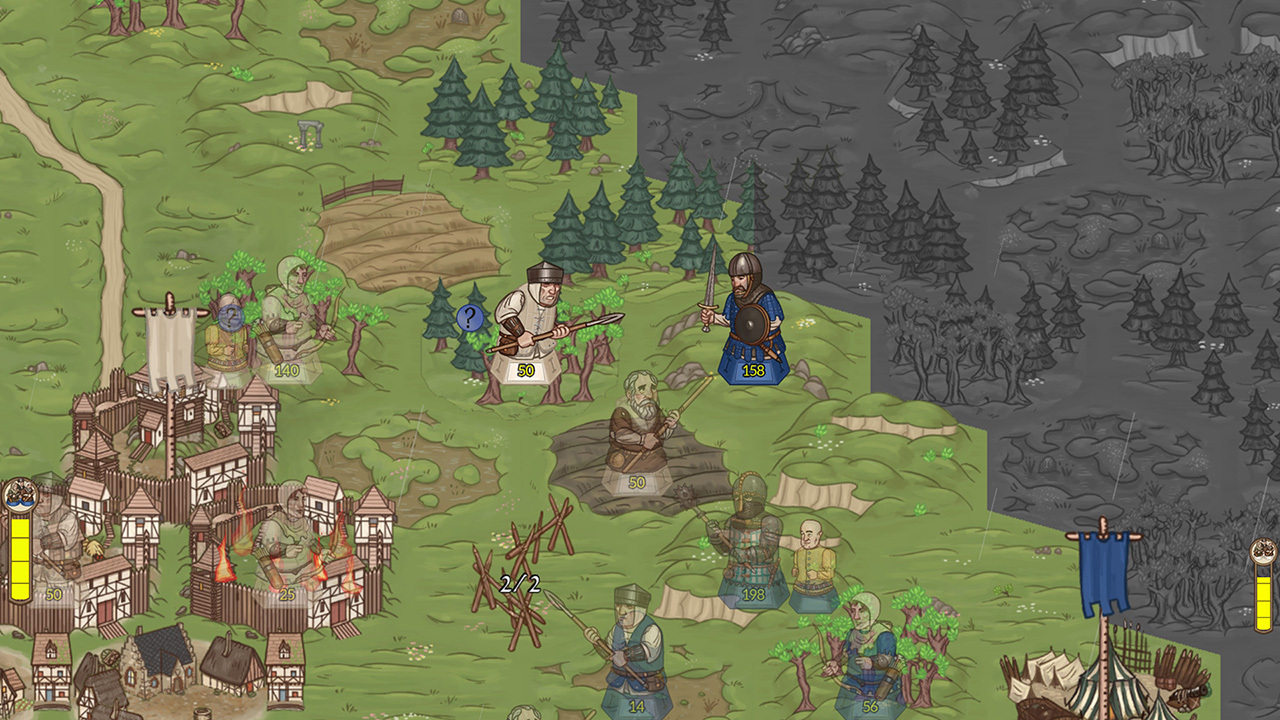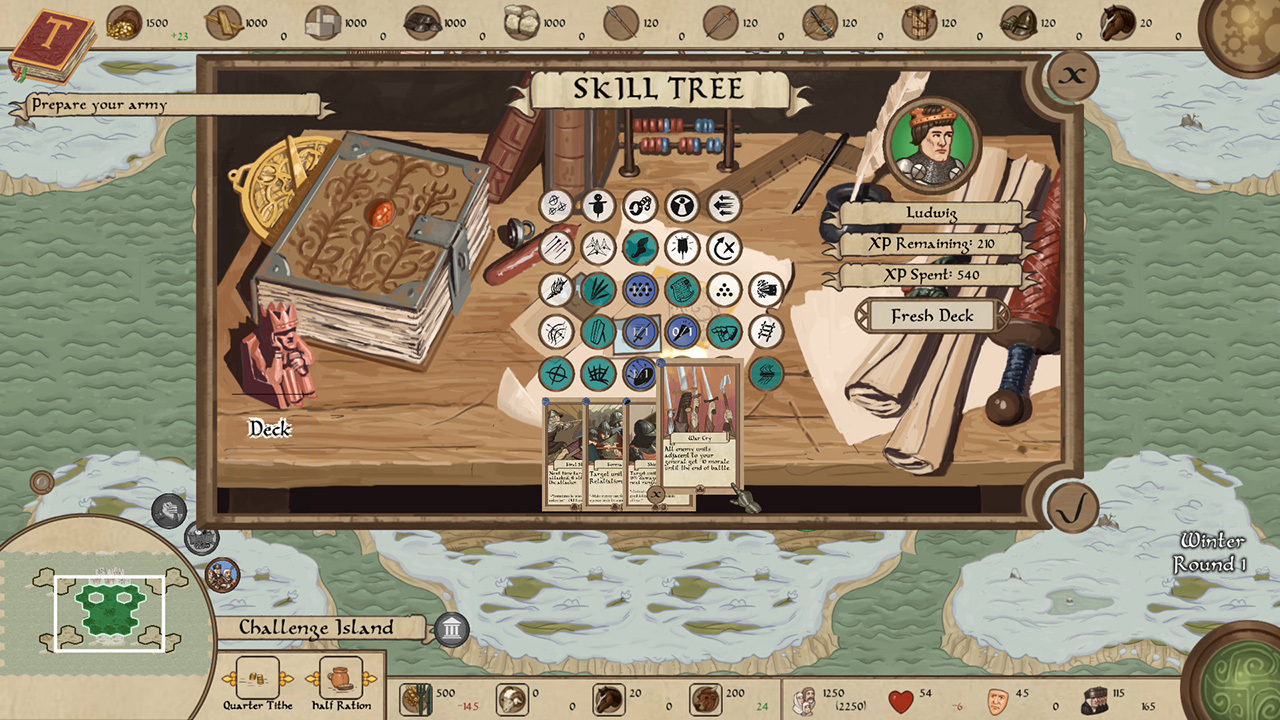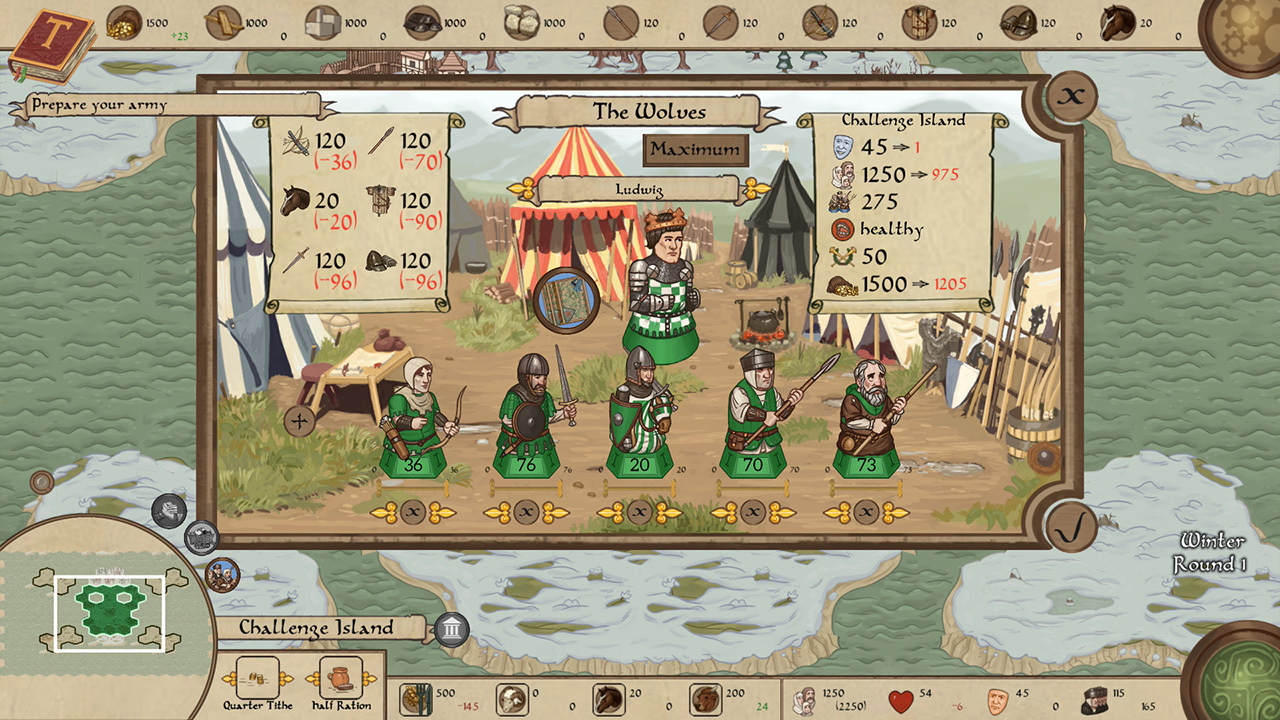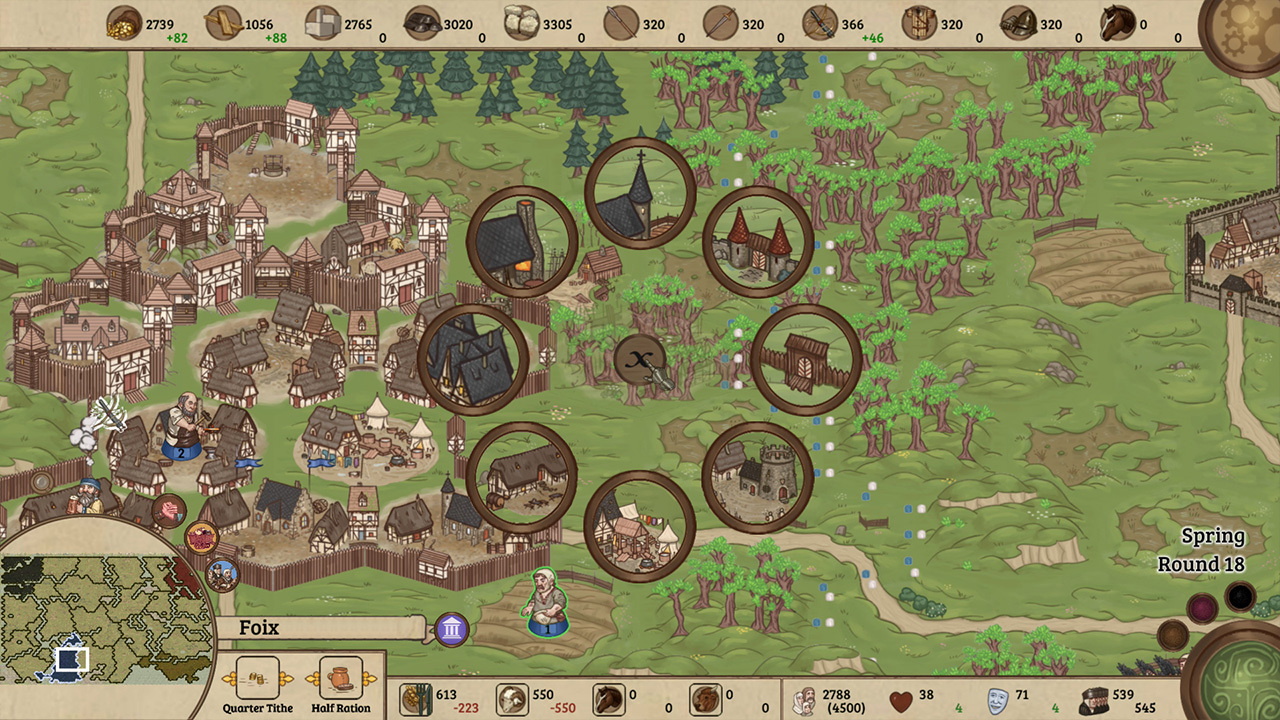Review: Rising Lords (Nintendo Switch)

Normal kids have to worry about homework, hanging out with friends, and maybe riding bikes around the neighborhood. In Rising Lords, they have to worry about statesmanship, domestic policy, and combat. I think I would rather live the first option, but we are here to play the game centered around the second option.
The game’s premise is that you are a young noble being groomed to lead a kingdom. You will get some guidance, but you have to learn to make your own decisions quickly. This means you also get to deal with consequences just as quickly.
Rising Lords is a turn-based strategy set in a sort of Middle Ages Europe society. The game looks the part, with different types of scenery presented to the player. There is the world map and there are action cards. The world map (a hex grid playing field) has some nice design elements, but it is more rudimentary.
There is a good level of detail, and you don’t have to squint through overly pixelated graphics to tell what you are seeing. There is not a grand level of variety in the imagery; with only a few shapes for the trees and terrain, they get repeated in obvious patterns. This isn’t so bad, considering the type of game with which we are dealing.
Speaking of the game grid, Rising Lords offers you control of how obvious the grid lines are. It may not be the handiest thing in the world, but it can help the player keep track of spaces into which you can or can’t move. The cards for the combat rounds are a little more detailed and look rather nice.
On the other side of the visual department is the overall viewability. There are text tips and other details which are so small in handheld mode that they are almost unusable. The best, and almost only, way to play this one is on the TV. You will need the text, especially in the tutorial stage, so save yourself the eye strain and play in docked mode.
Game audio is usually quite important for me, and Rising Lords provides a balanced soundscape with no real bad spots. However, there is nothing about the soundscape which really shines. It is a case of “done well enough”.
Whether playing through the single-player campaign or online multiplayer, gameplay is a mixed bag. To keep the hexagonal turn-based combat interesting, you have to play some social politics with things like how many food rations the peasants get per day, what sort of structures the town builds, and how many people you throw at the bears to drive them away. Every decision you make will shape the ability of your mini-kingdom and its population, as well as how high or low the morale of the people will be. If the morale gets too low, you may be looking at a revolt—and those don’t usually end well for the ruler at the top (which is you, of course). If you can manage to keep people happy, continue to build your army, and collect enough resources, you can set out to bring other towns into your kingdom in a grand effort to unite the whole region under the benevolent rule of one person: you.
The game provides a few ways to accomplish your goals. You have to build farms, mills, smithies, and so on. You need these to make food and weapons and grow the size of your town so you can improve your workforce and your army. There is also a resource management element to the game. Not only do you need new types of buildings to make different things, you have to decide on how much food to give the people, how many people to dedicate to making resources, how many people to conscript into the military, and so on.
Once you decide to take on a neighboring kingdom, the game switches into a turn-based combat system driven by a deck of action cards. I have played a few games of this type and, if they are well done, they can be good fun. This one is a bit middling, but the card-based battles work.
The biggest issue I have with gameplay is the developers seem to have crammed too many types of playing styles into one title. There is also some clunkiness with the controller and option selection. There are things you use a pointer to select and there are things you use an options wheel to select.
The Joy-Con controls can be a bit lively, which makes selecting something small a bit more difficult than it should be. The game does offer a two-button solution to slow the cursor movement for more precise selection, but I would prefer if this wasn’t necessary in the first place.
Finally, the tutorial could also be a bit better. There are places where it tells the player to go do a thing, but it doesn’t tell you fully how to do that thing.
As a whole, Rising Lords is a moderately good turn-based strategy game. There is some story going on, so it isn’t just blind action. The visuals are good, and there is plenty of detail to manage so you get a good amount of play time. The controls can be a bit clunky, however, and the multiple gameplay mechanics can start to feel a bit too busy. That’s a shame, because the complexity will make it difficult to find others to play online.







